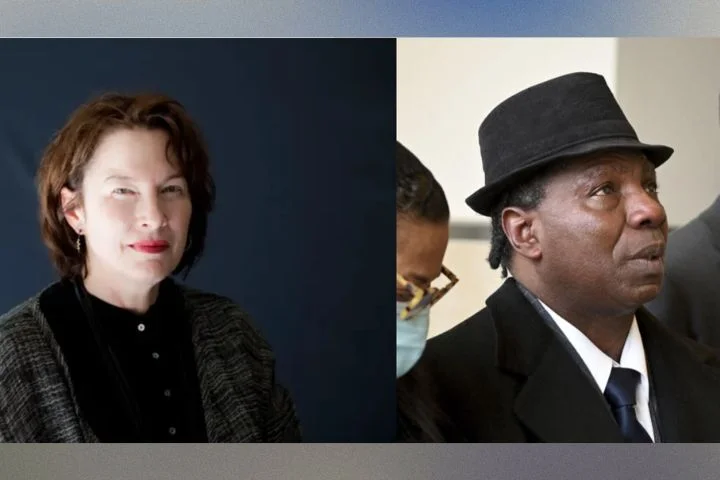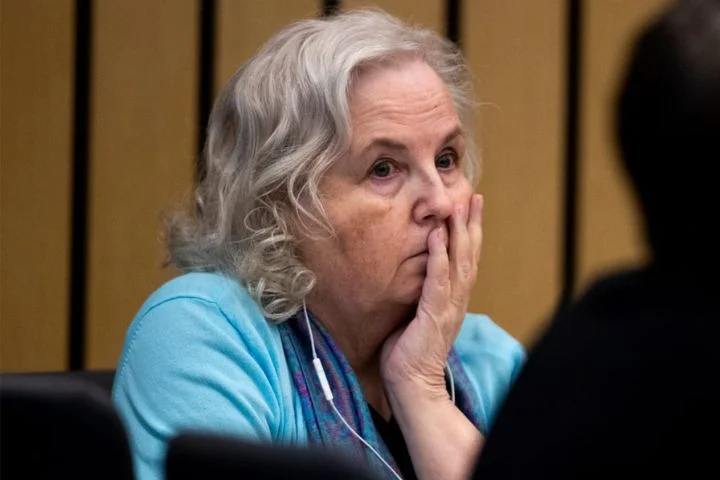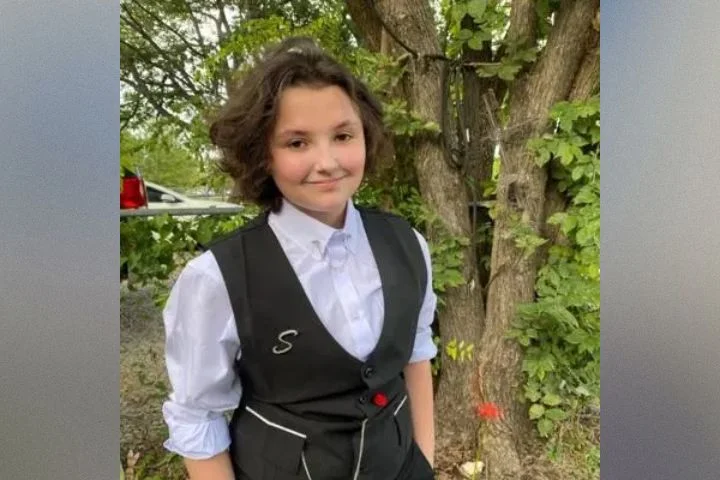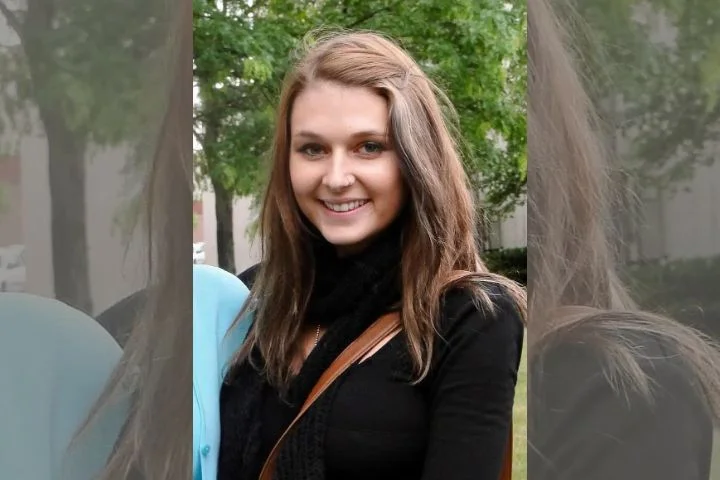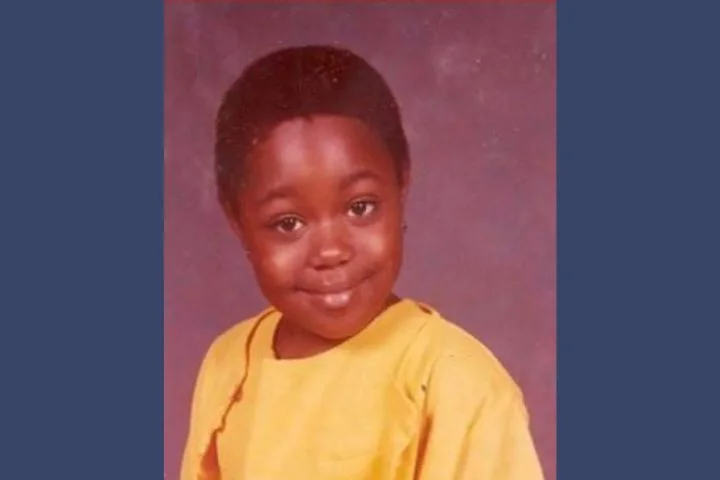Carmen Van Huss spent the evening of Monday, March 22, 1993, with her brother and father at Community Hospital South in Indianapolis, Indiana. Her grandmother was quite ill, and the family had gone there to spend some time with her. After visiting for a few hours, the trio left the hospital, and Carmen dropped her father and brother off at their home on the south side of Indianapolis. Since it was around 10:30 pm, her father asked her if she wanted to spend the night, but the 19-year-old declined, telling him she wanted to get home so she could wash some clothes she needed for work the following morning. Her father waved goodbye and watched his daughter drive away, not knowing it would be the last time he would see her alive.
Carmen lived with her boyfriend in the Turtle Creek North apartment complex in the Northside neighborhood of Indianapolis. She returned to the apartment complex around 11:00 pm; neighbors reported hearing her and an unknown male laughing in the hallway as they made their way to Carmen’s third-floor apartment. Some of the neighbors assumed that the male they heard was Carmen’s boyfriend, but he was in Arizona at the time and the identity of this unknown male has never been determined.
Around 1:00 am that morning, neighbors heard a commotion coming from Carmen’s apartment. It appeared that she and her male companion got into some kind of altercation, as Carmen was heard screaming for him to get off of her. None of the neighbors bothered to check on the teenager to see if she was okay, nor did anyone think to call the police. Everything went quiet around 1:30 am, then neighbors heard someone leave Carmen’s apartment and then exit the building.
While none of the neighbors had bothered to call the police when the fighting had been going on, several of them called the apartment manager in the morning and lodged noise complaints against Carmen. The apartment manager arrived a few hours later and taped a complaint letter on Carmen’s apartment door, reminding her to be more considerate of other tenants and not make so much noise late at night. Like her neighbors, he did not attempt to check and see if she was okay.
Carmen failed to show up at her waitressing job Tuesday morning, and calls to her apartment went unanswered. Her father, James Van Huss, also tried to call her a couple of times that day but was unable to reach her. Although it was unusual for Carmen to miss work or be out of contact with her family, no one was overly concerned.
When Carmen failed to show up for her scheduled shift on Wednesday, her manager thought it was possible that the teenager simply didn’t want to work there anymore. That afternoon, however, one of Carmen’s friends showed up at the restaurant and spoke to the manager. She explained that she was a friend of a current employee and was hoping to get a job there. When the manager told her that Carmen hadn’t shown up for two days, her friend was immediately concerned. She knew that Carmen wasn’t the type of person to miss work without telling someone, and she worried that something might be wrong. She and the manager decided to call Carmen’s father and see if he knew where his daughter might be.
James Van Huss was surprised to learn that Carmen had missed two days of work. He explained that when he saw her last on Monday night, she had planned to go home and do laundry so her uniform would be clean for her shift the next day. Since he had also been unable to reach her by phone, he decided to go to her apartment and check on her.
James made the drive across Indianapolis to his daughter’s apartment complex. He climbed the stairs to the third floor and immediately noticed the noise complaint that had been taped on Carmen’s door. He knocked on the door several times and called out for Carmen, but there was no sound coming from the apartment. He tried the doorknob and discovered that the door was unlocked, so he pushed his way inside.
James found himself staring at a scene of horror. His daughter was laying on the floor of the tiny apartment, partially clad and covered in blood. It was immediately clear that she was dead. James backed out of the apartment in shock and raced to call the police. Officers from the Indianapolis Metropolitan Police Department arrived quickly, but they were far too late to do anything to help Carmen. They strung up crime tape around the door and waited for homicide detectives to arrive.
At a press conference, Deputy Chief Jerry Cooper of the Marion County Sheriff’s Department told reporters that it appeared Carmen had fought for her life, struggling fiercely with her attacker before she was overpowered and stabbed multiple times with either a pocket knife or a screwdriver. Although her apartment had been ransacked — most likely during the struggle — nothing appeared to be missing. Her keys were untouched, and her purse was found inside her boyfriend’s car, which she had been driving while he was away, making robbery an unlikely motive.
At Carmen’s autopsy, the coroner was able to recover sperm from her body. This, along with scrapings taken from under her fingernails, was sent to the crime lab to be processed. Detectives were hopeful that the resulting DNA profile would eventually lead them to her killer. Technology was somewhat limited in 1993, however, and detectives knew it could take months before the evidence was processed.
It was clear that Carmen had known her killer. Detectives determined that the two of them had eaten fast food and shared a few beers after arriving at the apartment Monday night. Detectives began questioning everyone in Carmen’s family and circle of friends, but were unable to determine who she had been with on the night she was killed.
Carmen’s funeral was held on March 29, 1993. It was a rough day for her family, and their grief only intensified when James learned that his mother, Carmen’s beloved grandmother, died at the hospital while Carmen’s funeral was taking place. Overwhelmed by having to hold two funerals in one week, the family turned to the community for support.
While the Van Huss family tried to come to terms with their loss, detectives continued their search for the killer. They interviewed Carmen’s current boyfriend as well as all of her former boyfriends, but each of them had an alibi for the night in question and all were eventually cleared through DNA testing. Although they made several public appeals for information, investigators received few tips and the case soon went cold. It would remain that way for years.
Carmen’s family did everything they could to keep her case alive. They described her as a nice young woman who never caused any problems and who deserved so much more than life had given her.
Carmen’s parents had divorced when she was young, and she had been raised by her aunt and uncle. She attended Lawrence Central High School in Indianapolis; although she was a bright girl and extremely talented in art, she dropped out of school before her senior year and instead opted to earn her GED.
While they were growing up, Carmen and her brother Jimmy only saw each other on weekends, but they maintained a close relationship. He was only 15 years old when she was killed, and he felt the loss deeply. After their father, James, died in a car accident in 2002, Jimmy would continue his fight to get justice for Carmen.
In April 2003, Carmen was one of 116 murder victims whose picture was included in a memorial at the Indiana Statehouse. Her mother, Andrea Wolf, attended the unveiling of the memorial, telling a reporter that the passage of time had done nothing to heal the wound left by Carmen’s murder. The pain was intensified by the fact that, a decade later, the crime remained unsolved.
There was no movement on the case until 2013, when Detective Sgt. William Carter from the Indianapolis Metropolitan Police Department, took a look at Carmen’s file. In the fall of 2014, Carter asked the Indianapolis crime lab to send the DNA evidence collected in the case out for further testing.
Although Carter was not assigned to the Cold Case division, he liked to go through old case files in his spare time and in 2011 he had been instrumental in solving a 1989 cold case murder of a teenage girl, which led to him being named the department’s Investigator of the Year in 2013. He was hoping that he could be as successful in finally bringing some degree of closure to Carmen’s family.
Carter wanted the evidence from Carmen’s case to be sent to a testing facility in Utah that could provide a more detailed genetic analysis of the killer and help narrow down the suspect pool. The department approved the $1600 cost, and Carter eagerly awaited the results. Unfortunately, there was some kind of mix-up, and only Carmen’s DNA was sent to the lab. Using the DNA they were sent, scientists at the Utah facility determined that Carmen’s killer was a female of European descent.
Realizing that the lab had been sent the wrong sample, Carter asked for another test to be done, this time using a sample left behind by the killer. The department, however, refused to authorize a second test, claiming that they didn’t have the money to pay for it again. Maj. Chris Bailey, the department’s assistant criminal investigation commander, told reporters that the department had made a mistake in authorizing the first test; they didn’t pay for this particular DNA analysis because they didn’t believe it was always useful.
Determined to move forward on the case, Carter decided that if the department wouldn’t pay for the test, he would have to raise it himself. He set up an online fundraiser and asked for donations so that the testing could move forward.
Although there were mixed reactions to Carter’s online fundraiser — the Van Huss family thought it was horrible that he had to beg for donations and believed that the city should pay for the test — it was a definite success. Just a few hours after starting the fundraiser, Carter had enough money to pay for the new analysis to be completed.
The Indianapolis Metropolitan Police Department was not impressed. As soon as they learned of the online fundraiser Carter had started, they announced that Carter had been removed from Carmen’s case. They refunded all the money that had been collected and said they still weren’t authorizing the new DNA testing.
Although the IMPD claimed that Carter’s removal from the case had nothing to do with his fundraiser — they claimed that Carter wasn’t a cold case detective and needed to “stay in his lane” — Carmen’s friends and family were incensed. They felt that Carter was the first person to take any interest in Carmen’s case in years, and Jimmy told a reporter, “If Carter is off the case, the case is over.”
According to Jimmy, the investigator who had been assigned to work the case had never once been in contact with him, and it wasn’t until Carter started working on the case that the family had hope that it would finally be solved. Now, the department had snatched this hope away from them. “The only person that’s made any progress is Bill Carter and here they are taking him off the case.”
The Van Huss family took to the internet and circulated an online petition demanding that Carter be reinstated to the case. Within a couple of hours, they had collected hundreds of signatures and the attention of a local newspaper. A day later, officials backtracked on their initial statement and claimed that they were not taking Carter off of Carmen’s case, though it remained unclear if they would pay for the enhanced DNA testing he had requested.
Carter continued to work on the case while awaiting the decision about the DNA test. He was convinced that Carmen’s killer was an acquaintance of her or someone in her circle of friends but has thus far managed to remain unknown to police. He asked everyone who knew Carmen to think back to the time of the murder and who she might have been associated with at that time.
It’s unclear if advanced testing was ever performed on any of the evidence left behind by the killer. The last public statement the IMPD made about the case was in 2018, when a spokesperson told reporters that the department was still working on the case, and that “additional forensic DNA work is being scheduled with an outside source.” As of June 2022, no new information has been released and Carmen’s family is still waiting for answers.
Carmen Van Huss was only 19 years old when she was murdered in 1993 by someone she invited into her apartment. Carmen loved animals and was an extremely talented artist who was taken away from her friends and family far too soon. If you have any information about Carmen’s murder, please contact Detective Lt. William Carter of the Indianapolis Metropolitan Police Department at 317–327–1270 or email him at william.carter@indy.gov. You can also contact the FBI ViCAP at 800–634–4097 or email them at vicap@fbi.gov.


